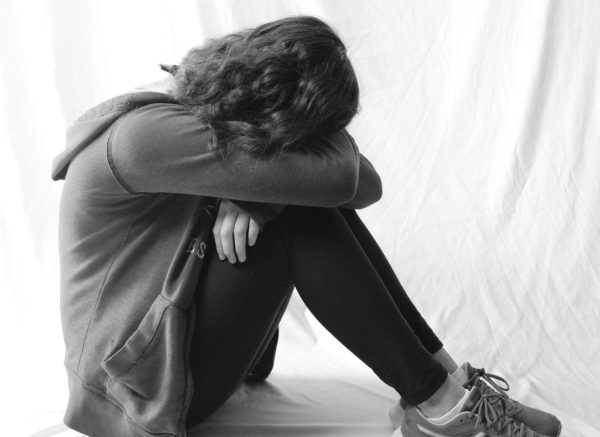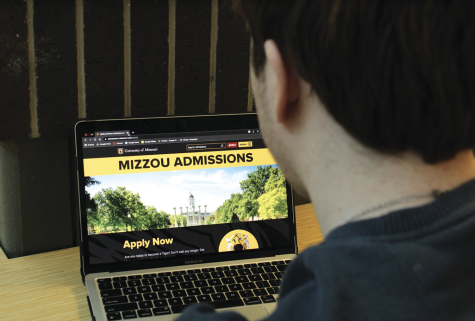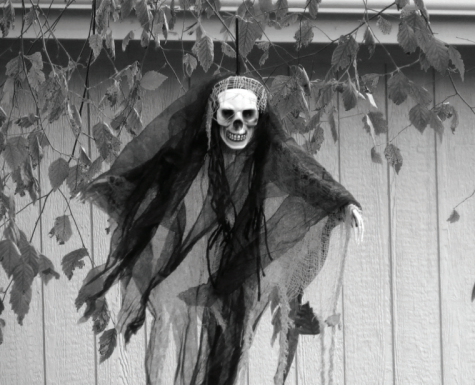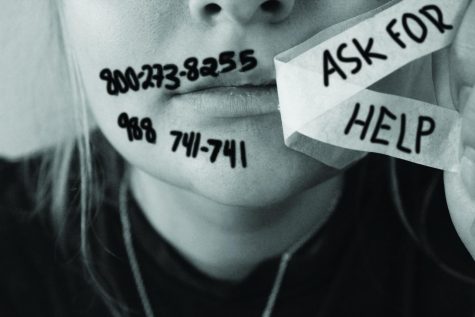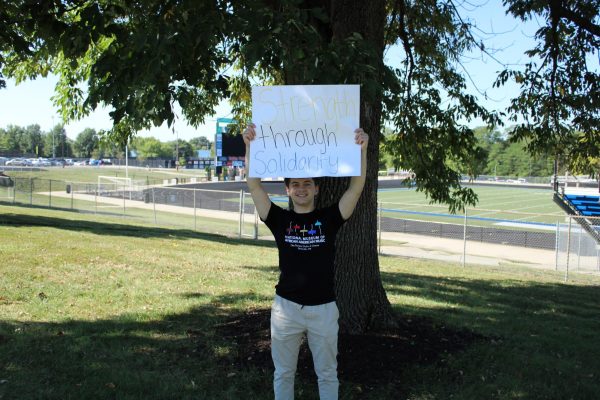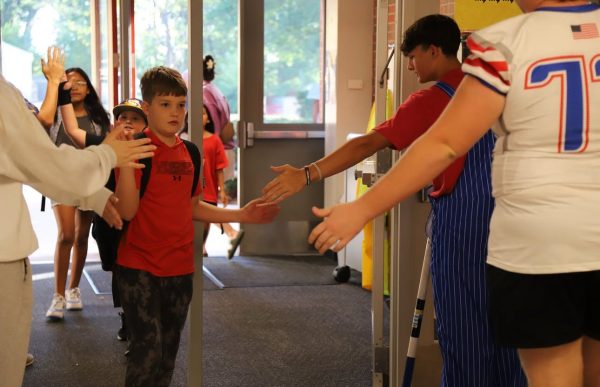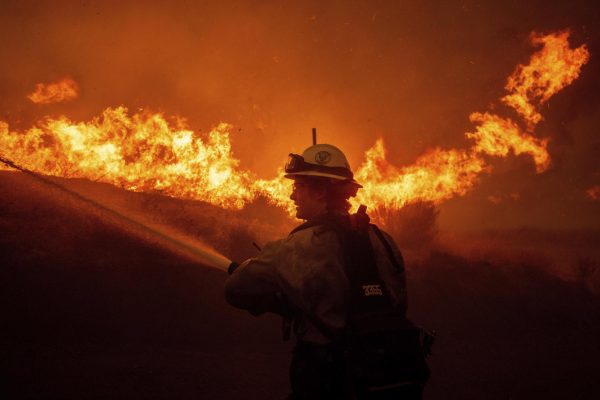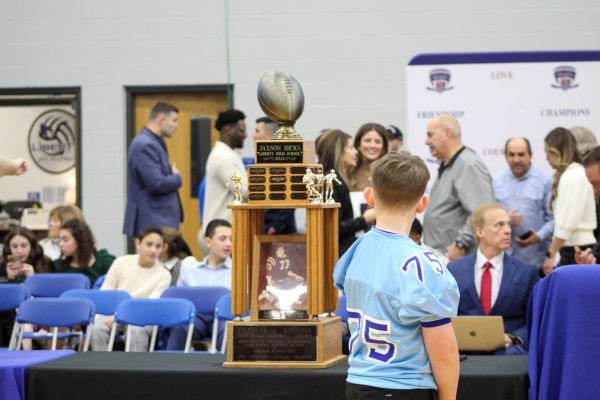Protests Against Police Brutality
Protests in the United States demand policing reform.
Activists are making history as protests against police brutality take place world-wide. The protests in Kansas City and all over the world were sparked by public outrage over the murder of George Floyd, a 46-year-old black man, who died while in police custody on May 25 in Minneapolis, Minnesota. According to footage captured by 17-year old Darnella Frazier, white officer Derek Chauvin, kneeled on Floyd’s neck for eight minutes and forty-six seconds while Floyd was pinned to the pavement. Supposedly, the tragedy began when Floyd visited Cup Foods grocery store in Minneapolis to buy a pack of cigarettes. A store employee believed he used a counterfeit bill to pay and reported it to the police. Thus, leading to a death that inspired people everywhere to protest and demand change in officers’ use of force.
Floyd is one of many victims of police brutality in the United States. Statistics from Mapping Police Violence show that African-Americans are three times more likely to be killed by police than white people. Data also reveals that out of white, black and Hispanic people, white people are the least likely to be killed by police. Proving the racial bias that many Americans are protesting so heavily.
“From my perspective, being an African American female and a mom, this is something we deal with on a regular basis,” Mitigation Specialist Lela Hubbard said. “We teach our kids early how to be respectful to the police, how to put your hands on the steering wheel, how not to talk back and be mindful of the fact that even though you may have white friends, they will still treat you differently.”
How Does this Impact Kansas City?
In Kansas City, protests are taking place at the Plaza and there are demands to rename the J.C. Nichols street and the fountain that resides there. Protestors insist that the street and fountain be renamed because the namesake, Jesse Clyde Nichols, was a city planner whose actions effectively supported the segregation of Kansas City that has had long-lasting effects. Nichols was a significant real estate developer for the Country Club Plaza. Many like writer Tanner Colby who argues in his book, Some of My Best Friends are Black, believe that Nichols’ work acted as a catalyst for “white flight.” White families fled from the east side to developments west of Troost, causing what is now dubbed “The Color line” or “Troost Divide”. Nichols also used illegal real estate tactics like “panic-selling,” “blockbusting,” or “racial steering”; the practices of scaring specific buyers away, or pushing others towards a specific area based on race and with the intention of controlling the racial composition in neighborhoods. Nichols’ reputation and association with the Plaza have been scrutinized because many believe he is at fault for ensuring that people of color, especially black Americans, and people of the Jewish faith were not able to move into the Country Club Plaza. Essentially, contributing to both a physical and theoretical racial divide within Kansas City. A divide that protesters claim the city struggles with today, also a divide that protesters believe is being exacerbated by the tragic deaths of black men and women.
Though those deaths are the main factor that sparked protests against police brutality and the recent resurgence of the Black Lives Matter movement, the main goal of the protests is to create reforms in policing and to ensure that all black men and women are protected from racial bias and hold the police more accountable for their actions. Reporters from The Bell tried to get a statement from the Kansas City Police Department and the Liberty Police Department on the protests, however, they are hesitant to say anything on the matter or were unavailable at this time.
What Can People Do to Support Change?
Protesting is the way many people in Kansas City are choosing to make their voices heard. It’s an effective method to grab people’s attention, but is it enough to truly make reforms within the police forces in the community? What else can people do besides protesting?
Learn and Spread the Word
Many racial injustices can occur because many white people don’t realize or refuse to acknowledge the upper hand they have in the United States. These advantages are known as systemic racism.
In order to limit the amount of racial bias in Liberty, people can take steps to educate themselves on the advantages they have and use those advantages to help others. That includes speaking out when racial injustices occur and explaining why that behavior is wrong. Fighting racial bias is a two-way street that requires everyone, not just black people, to fight for change.
“I’m glad the protests are happening,” Hubbard said. “Black people have been watching forever, but it took the white people to come out and march with us for people to finally recognize and feel the need to change and do something. It’s making people have conversations that they were afraid to have.”
Superintendent of Liberty Public Schools Dr. Jeremy Tucker understands that having these conversations about racial bias is one way people can learn how to address and avoid it.
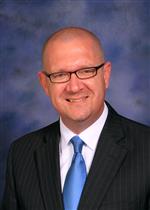
Dr. Tucker recommends Teaching Tolerance as a learning tool.
Click here to check it out: https://www.tolerance.org/
“People are realizing that there is a lot of momentum to really create change, and [Liberty Public schools] wants to be a part of that,” Tucker said. “But we can’t do it alone, so that is where the conversation piece comes into play. We want to hear about parents’ and students’ experiences. The good and bad. Our students are watching these events play out in real-time, and we must come alongside them as teachers and parents to not only speak against racism and injustice but to equip them with the tools they need to process and navigate these critically important matters.”
Another way people can educate themselves about racial bias is by reading and watching material that gives perspective on being a person of color. Hubbard recommends watching the movie The Hate You Give because it is relevant to the protests that are going on today.
“It will give you a different perspective as far as what some black families go through and how they have to deal with it,” Hubbard said. “It’s going to show how to deal with white police officers and black police officers. It’s a good movie because it talks about how we dealt with police brutality back then and how even in the black community still, we have issues and stuff going on that people do not want us to speak out on.”
Be Politically Active
In order to make real changes in the community, students need to confront their leaders and representatives who are in charge of making policies.
“While we are protesting in the streets we need to also be protesting our senator, mayor, and governor offices because that is how change is going to come,” Hubbard said. “We have to start from the top down. We need to put new leaders in office and get rid of the old people who are not making a change.”
American citizens have the power to push their government into action through their votes as well.
Take two minutes to register to vote and use your voice!
Click the link to register: https://www.vote.org/register-to-vote/
“The ballot box is going to be what changes things,” Hubbard said. “Putting pressure on your senators and legislatures to write bills and putting pressure on police commissioners as well. Because the police union is very strong. Putting pressure on the unions to change the way police do things.”
Donate
There are many organizations out there that do their part to promote racial equality. People can take part in supporting by donating money to a cause of their choice. A list of organizations working against police brutality can be found here, or people can do their own research and donate to one they want to support.
What Changes are Being Made in LPS?
In a recent email sent to Liberty Public Schools’ families, Tucker responds to the recent protests and issues.
“Our Board of Education, teachers, and administration commit to listening and supporting now more than ever,” Dr. Tucker said. “The work of our Board of Education has prompted changes to policy and most recently to our District organizational structure.”
In this same email, Dr. Tucker announces the addition of Chief Equity Officer to the LPS Cabinet. He also declares Dr. Andrea Dixon-Seahorn, Exec. Director of Elementary Education, as the person fulfilling the position and describes her as an “extremely capable” individual for the new title. Dr. Dixon-Seahorn’s purpose will be to serve as an advocate for equity, diversity, and inclusion. As Chief Equity Officer she will also work closely with district leaders, stakeholder groups within the district, and external partners to shape the warranted environment and execute the strategic plan.
“[Executing the strategic plan and graduation profile] becomes more about resources and students having access to a variety of resources. Whether it’s literature, real-world learning experiences, or what the library has to offer. The second piece will be centered around teaching from a more multicultural or diverse perspective. So as not to say something insensitive, or to not say something offensive. Even more importantly, to ensure that we’re providing a better picture of diverse contributions over time. For example, in history classes, students need to learn about diverse historians and individuals that contributed to where we’re at as a country. Not just what is included in textbooks.”
Plan Of Action
As well as ongoing changes to the District’s organizational structure, LPS will also implement an equity-centered strategic plan and a graduate profile that was approved in Sep. 2019. The strategic plan is divided into five groups including community, learning, personal growth, leadership and teaching. Each group has multiple vision statements that specifically address topics like diversity, equity, environment and culture. The LPS Strategic Plan is a financial and deadline specific guide to solutions intended to provide anyone related to LPS with the tools they need to be successful in a diverse country and ever-changing society. The plan is supposed to elicit long-standing change in overall school environments and individuals’ experiences, which is what the cultural section describes in more detail.
“About two or three years ago when we were dealing with a few students that posted some insensitive content online. We also began embarking upon some conversations across our community that we could be doing more to support our students and staff members of color more than we ever have before. Sometimes those conversations can be hard because we believe that we have a great community, however, we are not perfect.”Basically, the initial conversations are what inspired us to create an equity-centered strategic plan,” Tucker said.
Those conversations catapulted an eight to ten-month process that consisted of focus groups and surveying staff, parents, community members, business owners and students to solicit feedback about what they believe is important. After months of gaining information, the LPS Graduate Profile was formed. The profile is a district-wide campaign titled ‘THRIVE’ and promoted as the skills LPS students will practice throughout their academic careers. The profile consists of five main skills that each incorporate individual goals, definitions and mission statements. Dr. Tucker highlights empathy, active listening, civic engagement and awareness as skills he believes will contribute to change in school climates.
LHS Staff Support & Involvement
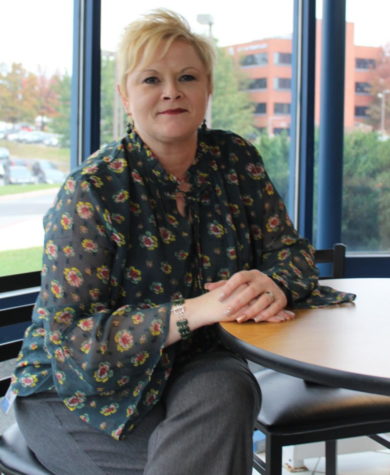
In addition to practicing those skills, LHS also encourages organizations and programs aimed towards promoting diversity, one of these organizations is, The Point, which is a board of faculty that is committed to creating connections and exploring different perspectives to help develop awareness, knowledge and skills that create a healthy school community.
“This movement was put into place by our faculty team focused on Diversity, Equity and Inclusion,” LHS Principal Dr. April Adams said. “It will be our duty to ensure that part of the work done within these clubs is inclusive of more anti-racist and equity-focused work and messaging. This committee has also led many outstanding professional learning experiences for our teachers focused on looking at the reality of our school.”
As specified by LHS’s Assistant Principal, Sara Wickham, before The Point many staff members expressed a desire to learn strategies and create action steps to ensure all students feel safe within the school. In order to do so, The Point hosts and participates in a variety of experiences throughout the school year while encouraging all staff members to do the same. Essentially the mission of The Point aligns perfectly with the intentions of the
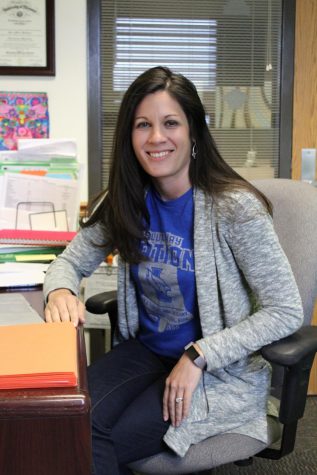
strategic plan and graduate profile. The Point not only allows the opportunity for adults in LHS to practice skills in the graduate profile, but they also aspire to collaborate with student groups to expand students’ chances to develop the skill sets and mindsets outlined in the LPS graduate profile.
“Creating school environments that promote diversity, equity and inclusion is an ongoing process; we will never be done! We
support change by creating a space for the critical reflection and collaborative dialogue that is essential to the process,” Wickham
said. “We encourage change by challenging staff to evaluate current school practices and how those practices impact students directly and indirectly, and offer strategies that foster diversity, equity and inclusion.”
Disclaimer :
As a student newspaper, The Bell strives to always include student perspectives in our stories because it is our responsibility to give students a voice. However, due to the fact that our poll for this story only received two responses, The Bell felt that the LHS student body would be unfairly represented by the results and answers that were gathered from the poll. Because of this, The Bell made the decision to not include the results from the poll in this story. If you have any questions or concerns, feel free to contact The Bell’s Editor-in-Chief, Regan Johnston, or The Bell’s Advisor, Jamie Gumina.


